Design & Engineering
The DS 3 Crossback E-TenseE shares the same all-electric platform as the Peugeot e-208 and the Vauxhall Corsa-e. The powertrain consists of a 50kWh lithium-ion battery, located under the floor, and a 100kW (136hp) electric motor with 260Nm of torque.
Whereas the Peugeot and the Vauxhall are superminis, the DS 3 Crossback is an SUV – in other words, it’s a body style that’s in demand by buyers (but this is just a front-wheel drive rather than a four-wheel drive SUV). And to further set it apart, the DS has its own distinctive design, on the outside, and on the inside – where its ‘diamond’ theme is evident throughout.
The DS 3 Crossback E-Tense is essentially the same car as the DS 3 petrol and diesel models – with the same boot volume – but with zero-tailpipe emissions.
ОРИГИНАЛЬНЫЙ ДИЗАЙН: СТИЛЬ, ВЫЗЫВАЮЩИЙ ВОСХИЩЕНИЕ
Фирменная решётка радиатора DS WINGS выделяет автомобиль в потоке и делает его узнаваемым. Фары дневного света с вертикальными светодиодами, похожими на жемчужины, и вытянутые фары DS MATRIX LED VISION выглядят стильно, современно, к тому же они очень функциональны. Задние фонари в стиле хай-тек, объединённые молдингом с надписью CROSSBACK, придают новому кроссоверу особую элегантность.
Невидимые ручки дверей
Невидимые ручки дверей выглядят стильно и современно. Эта инновационная технология впервые представлена в начале лета 2018 года на концепте DS Х E-TENSEDream-Car и является новинкой для данного сегмента. Принцип прост: ручки появляются, когда это необходимо. В остальное время они просто незаметны. Автомобиль оснащён функцией бесключевого доступа и автоматического запуска двигателя. При приближении владельца центральный замок разблокируется, а все четыре ручки автоматически выдвигаются, приглашая пассажиров в салон. Когда пассажиры покидают салон, дверные ручки автоматически скрываются в поверхности двери.
DS 3 Crossback (2022) — технические характеристики, двигатели, производительность, расход топлива
Ассортимент доступных силовых агрегатов включает 3 бензиновых и 2 дизельных двигателя, а также электрический вариант. Все версии являются переднеприводными.
Бензиновые двигатели:

- 1.2 PureTech (102 л.с., 205 Нм) с 6-ступенчатой механической коробкой передач, разгон 0-100 км/ч: 10,9 с , максимальная скорость: 185 км/ч , средний расход топлива: 5,4-6,1 л/100 км
- 1.2 PureTech (130 л.с., 230 Нм) с 8-ступенчатой автоматической коробкой передач, разгон 0-100 км/ч: 9,2 с , максимальная скорость: 196 км/ч , средний расход топлива: 6,0-6,7 л/100 км
- 1.2 PureTech (156 л.с., 240 Нм) с 8-ступенчатой автоматической коробкой передач, разгон 0-100 км/ч: 8,2 с , максимальная скорость: 208 км/ч , средний расход топлива: 6,2-6,8 л/100 км
Дизельные двигатели:
- 1.5 BlueHDi (110 л.с., 250 Нм) с 6-ступенчатой механической коробкой передач, разгон 0-100 км/ч: 11,4 с , максимальная скорость: 180 км/ч , средний расход топлива: 4,5-5,2 л/100 км
- 1.5 BlueHDi (130 л.с., 300 Нм) с 8-ступенчатой автоматической коробкой передач, разгон 0-100 км/ч: 9,9 с , максимальная скорость: 195 км/ч , средний расход топлива: 4,7-5,4 л/100 км
Электрический привод:
E-Tense (136 л.с., 260 Нм) с 1-ступенчатой понижающей коробкой передач и аккумуляторным блоком емкостью 50 кВт/ч , разгон 0-100 км/ч: 8,7 с , максимальная скорость: 150 км/ч , запас хода: до 341 км
DS 3 Crossback: on the road
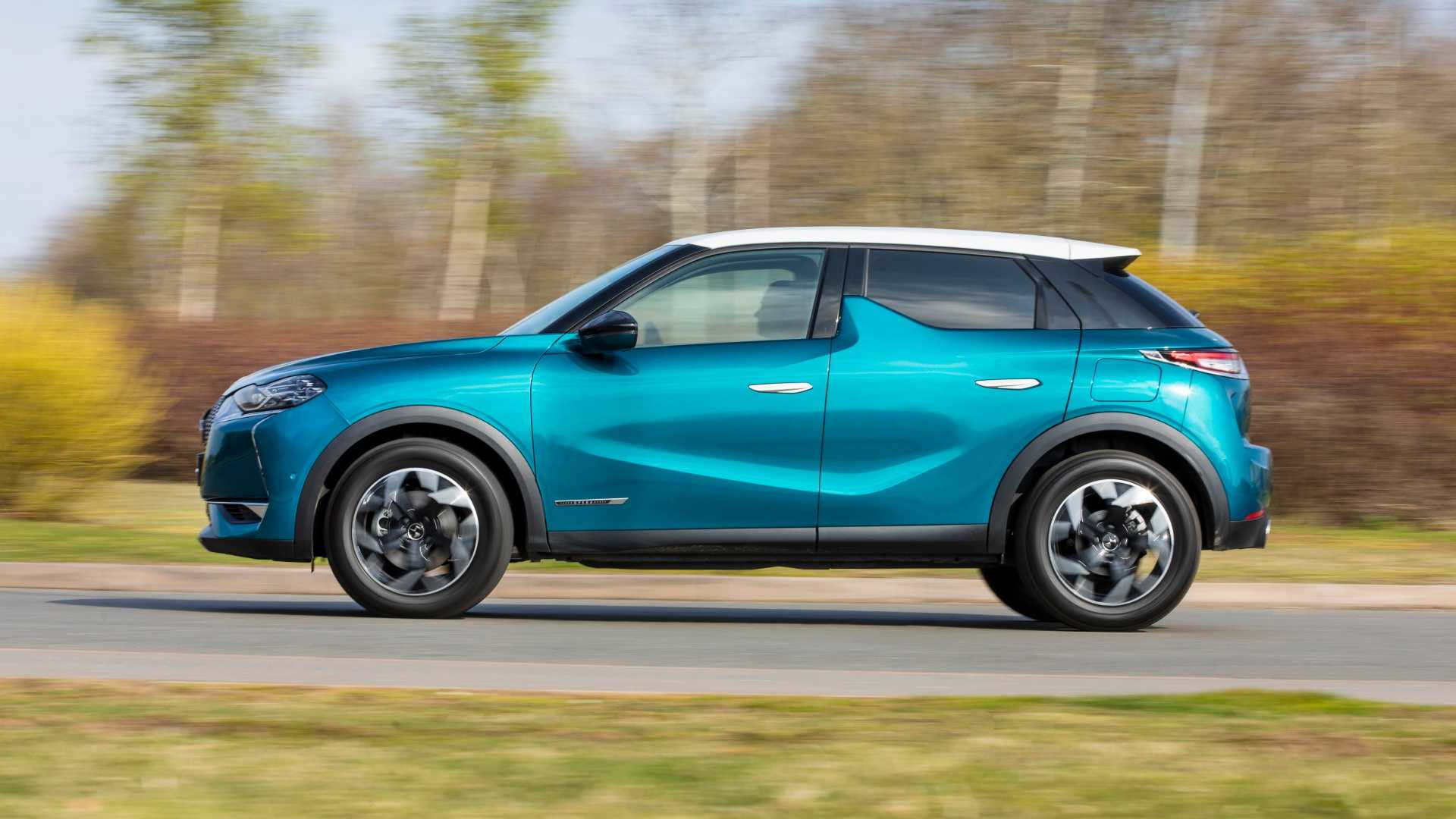
We started out in the 130hp 1.2 petrol, the likely best-seller. It’s eager to rev and the auto ‘box reacts quickly and intuitively. Performance is modest – 0-62mph in 9.2sec and 124mph flat-out – although thrifty fuel economy of 42.2-47.1mpg (WLTP figures) makes up for that.
If you want a sporty drive, you’re better off with the DS 3 hatchback; the Crossback’s extra height and heft takes its toll in corners. It’s steering is direct but devoid of feel, while the damping is rather lumpen: firm around town, then floaty at speed.
For everyday duties, however, the Crossback is perfectly proficient. It coped well with the cut-and-thrust of London traffic, helped by light controls and plenty of driver aids.
That said, we would approach the 155hp petrol version with caution; it’s useful extra punch is offset by stiffer suspension, which makes the ride quite harsh. No doubt the larger 18-inch wheels of our second test car – a La Premiere special edition, only available at launch – didn’t help. As ever, try before you buy.
Inside the DS 3 Crossback
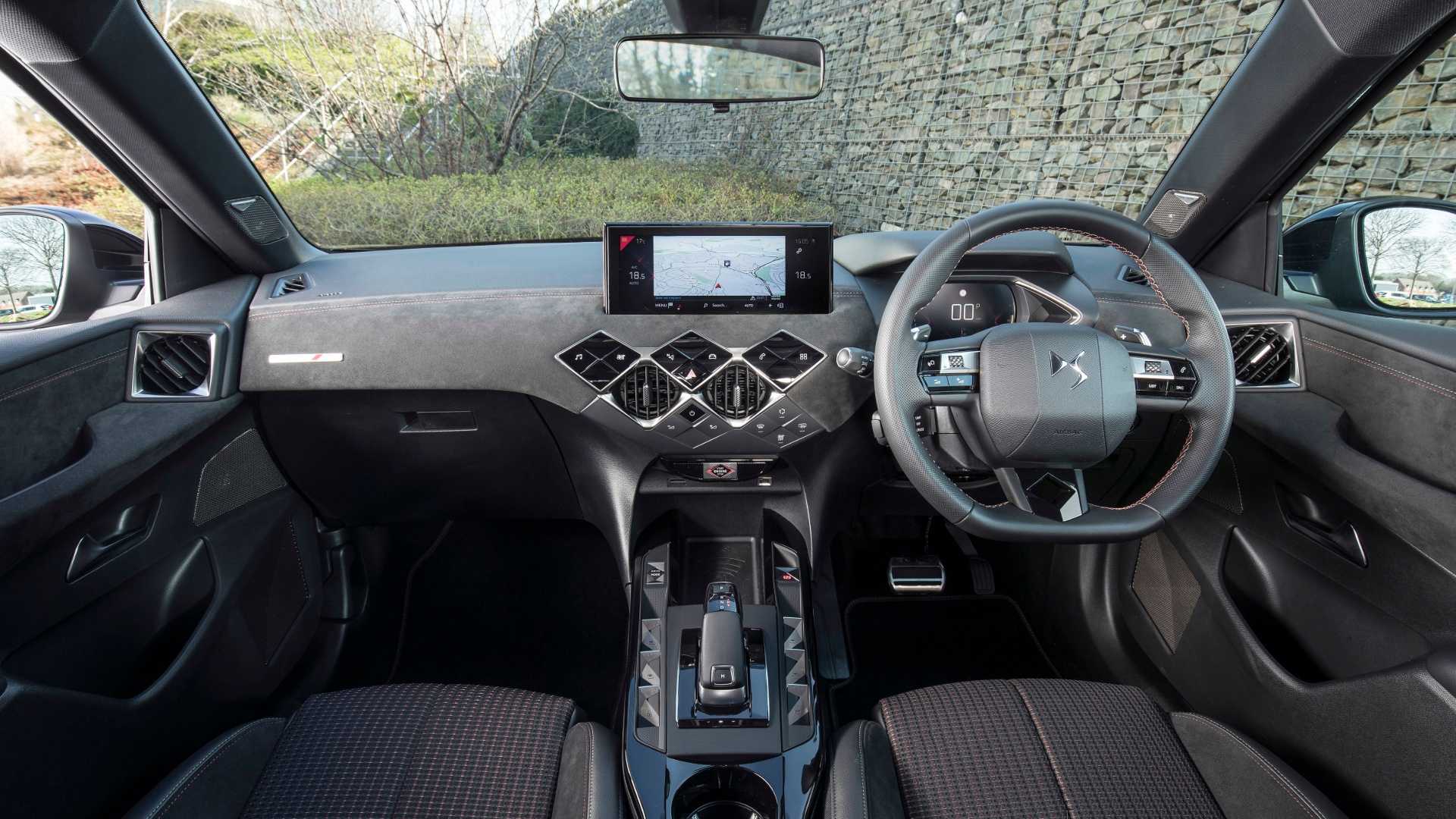
The Crossback’s cabin is even more distinctive – its pièce de résistance, in fact. It’s wilfully quirky in the finest French tradition, combining flamboyance with functionality.
Most of the infotainment and ventilation controls are clustered within seven intersecting diamonds, with a seven-inch touchscreen (10-inch on higher-spec versions) perched above. Driving modes are selected via jewel-like switches on the centre console. Their unusual guilloche finish resembles ‘braided or interlaced ribbons’ (it says here).
The hip-hugging front seats are very comfortable and the main touch-points feel suitably plush. You’ll discover some decidedly non-premium plastics elsewhere, though. Rear-seat passengers may feel a tad claustrophobic, thanks to shallow side windows and limited legroom.
Standard kit on the entry-level Elegance includes 17-inch alloy wheels, Bluetooth, DAB radio, lane-keep assist, keyless start and rear parking sensors. Upgrading to Performance Line (+£1,500) gets you tinted windows, LED rear lights and Alcantara trim, while Prestige (+£2,000) adds leather, navigation, auto wipers, front parking sensors and the 10-inch touchscreen.
Fully-loaded Ultra Prestige (+£3,000) comes with 18-inch alloys, head-up display, reversing camera and advanced Matrix LED headlights. Apple Carplay and Android Auto connectivity is standard throughout.
Ride and handling
The petrol and electric versions of the DS 3 behave very differently on the road, with the latter proving significantly more refined and more comfortable, while the former feels slightly lighter on its feet.
Although handling is unlikely to be high on any DS 3 buyer’s list of priorities, both cars steer quite neatly, but the lighter petrol-powered models are definitely more agile than their heavy, battery-powered siblings.

The big difference, though, is the way the two cars ride. Counter-intuitively, the lighter petrol-engined cars are less comfortable than the E-Tense versions, with a distinct choppiness even on relatively smooth road surfaces. It’s almost as though the car’s body is bouncing around on its springs, rather than settling on them. And for a car that’s supposed to differentiate itself from German rivals through comfort, that’s a shame.
Fortunately, opting for the E-Tense improves the ride massively, making the car feel that little bit more settled and stable over bumps. It isn’t perfect – the weight of the battery can drag it over bumps and that seriously impacts the low-speed ride – but it’s generally mature and comfortable, particularly on the motorway.
And that’s only part of the reason why the DS 3 E-Tense is a much more pleasant car to drive than the 1.2-litre equivalent. The other big factor is refinement. Naturally, the electric motor is quiet, but so is everything else about the DS 3. Tyre roar is kept to a minimum and there’s just a whisper of wind noise at speed, so the DS’s cabin is a very relaxing place to be.

There are other issues, though. The brakes are disconcertingly spongy, with no real feel for what’s going on. That’s partly because the car is using regenerative braking to maximise range as well as using conventional brakes for maximum stopping power, and smoothing out the transition between the two technologies is tough, but other cars do a better job than the DS of that. And when you hit the brakes, the nose of the car takes an almost alarming dive as the suspension struggles to cope.
Новый DS 3 Crossback (2022) — варианты оснащения и цены
На все версии предоставляется 2-летняя гарантия без ограничения по километражу.
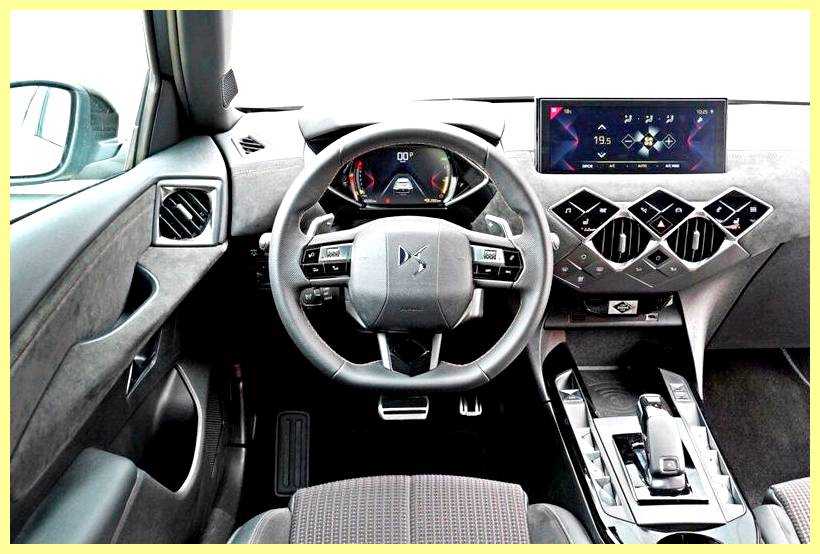
Montmartre — от £104 900, выбранная стандартная комплектация:
- 17-дюймовые легкосплавные диски ANKARA цвета «серая антра» с шинами 215/60 R17
- Комплект для ремонта колес (для версий 1.2 PureTech/102 л.с., 1.5 BlueHDi/110 л.с. и E-Tense/136 л.с.)
- Дополнительное запасное колесо (для других версий двигателя)
- Ручное кондиционирование воздуха
- Фронтальные подушки безопасности с возможностью отключения со стороны пассажира
- Боковые подушки безопасности и шторные подушки безопасности для сидений 1-го и 2-го ряда
- Система ESP
- Активное безопасное торможение (V-AEB) до скорости 85 км/ч — система, позволяющая автомобилю автоматически тормозить, если он обнаруживает неизбежное столкновение с транспортным средством, движущимся в том же направлении, или остановившимся транспортным средством или пешеходом
- Активное оповещение о пересечении линии (LKA)
- Система распознавания знаков ограничения скорости (SLI)
- Регулятор скорости, включая функцию ограничителя скорости
- Автоматический стояночный тормоз с функцией помощи при подъеме (Hill Assist)
- DS ACCESS — система бесключевого доступа для запуска двигателя нажатием кнопки START/STOP
- Кнопка блокировки замка двери со стороны водителя
- Галогенные фары
- Крышки зеркал матового черного цвета
- Ветровое стекло с дополнительным акустическим слоем
- Тонировка боковых и задних стекол
- Отделка салона коричневой тканью — метеоритная коричневая ткань (сиденья), декоры из ткани Pure Basalt (приборная панель и отделка дверей)
- Регулировка сиденья и спинки передних сидений механическая
- Вертикальная регулировка сиденья водителя механическая
- Спинки задних сидений складываются 40:60
- Крепления Isofix на двух задних боковых сиденьях
- Регулируемые по высоте подголовники
- Солнцезащитные козырьки с зеркалами
- Боковые зеркала с электроприводом, ручное складывание
- Окна с электрическим приводом, последовательным управлением, с защитой от несанкционированного открывания
- Розетка 12 В
- Радио DS CONNECT RCC A2 с 7″ цветным сенсорным экраном, AM/FM-тюнером, Bluetooth с функцией потокового вещания, 8 динамиками, USB-портом, звуковым процессором ARKAMYS и тюнером DAB (Digital Audio Broadcast), возможностью MirrorScreen (Apple Car Play, Android Auto, Mirrorlink, USB) для совместимых телефонов
Interior and practicality
While external design might attract people to a car in the first place, cabin design is a big part of the long-term appeal. DS has tried to freshen the DS 3’s interior with a larger touchscreen and a new steering wheel, as well as modified dashboard switchgear, but the difference is hardly dramatic.
The diamond-shaped button clusters on the dash may aspire to be haute couture but they still don’t feel as solid as the buttons you’d find in a Mini or an Audi, while some may feel the asymmetric design and the mix of plastics used in their construction gives them a slightly messy appearance.

Those switches are a bit of a metaphor for the rest of the cabin, which seems to give with one feature and then immediately take away with another. The swathe of material across the dashboard — be it leather in the Opera and Rivoli models or suede in the Performance Line — feels superb, but it sits next to the hard, unforgiving plastic of the glovebox lid. It’s a running theme that’s also particularly evident on the doors.
There are ergonomic challenges, too, including the window switches on the centre console and the arm rests that seem to dot the doors but disappear at exactly the point where you want them to be. Add in some slightly unconventional steering wheel controls, an oddly positioned drive mode selector and a short-leg, long-arm driving position, and you’ve got a car that very much feels like a case of style over substance. You might get used to bits of it, but some of those annoyances will last for the lifetime of the car.
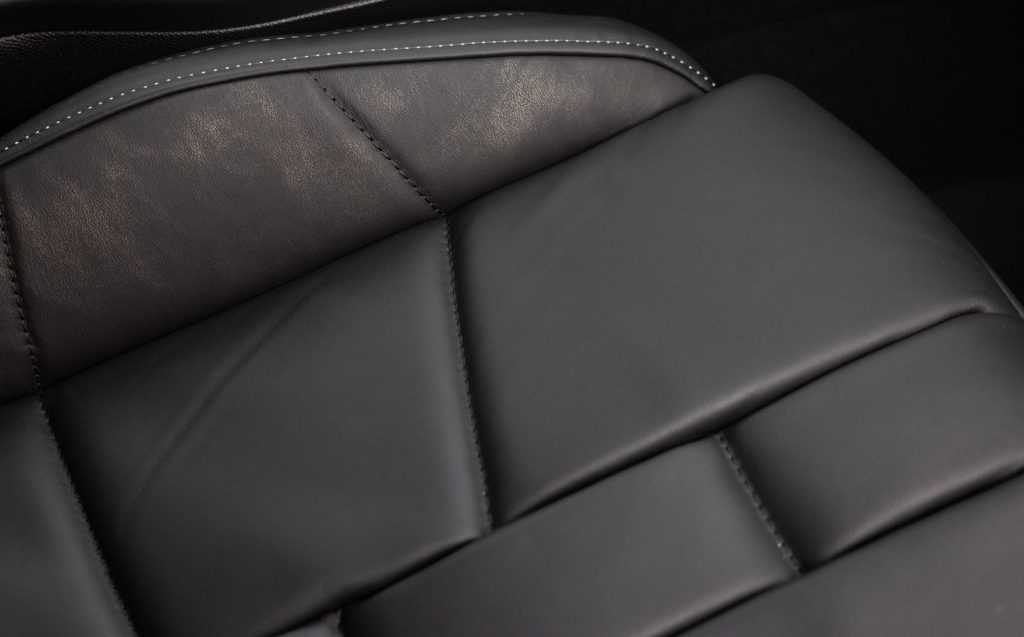
Perhaps the biggest issue with the DS, though, is space in the rear. Fitting four six-foot adults is going to be a challenge, and those in the back are going to get a bit cramped thanks to a lack of rear legroom.
Choose a Performance Line+ model, which comes with black roof lining and tinted rear windows, and the small windows mean it’ll be dark and claustrophobic in there, too.
Of course, that would be fine if you weren’t going to use the rear seats much and the boot was massive as a result, but it isn’t. At 350 litres, it’s smaller than you’ll get in an Audi Q2 or Mini Countryman, and it’s about the same size as the boot in a VW Polo, for reference.
Overview
You’re not a premium car manufacturer these days without a small, stylish SUV in the ranks. That’s the thinking that led DS – the luxury arm of the French PSA Group – to launch the DS 3 Crossback.
The 3 Crossback replaces the original DS 3 supermini and like that car, uses a winning formula of striking, desirable looks with fairly run-of-the-mill underpinnings. The idea being that while the car itself turns heads, owning it should be painless and as easy as any other small SUV. That’s a tough one to crack, given the strong competition – from cars such as the MINI Countryman, Audi Q2 or Lexus UX – not to mention entry-level versions of the Range Rover Evoque.
It’s not just a distinctive face, either (we’ll stop one short of calling it ‘pretty’) – the DS 3 Crossback has plenty to recommend it. It’s comfortable, with a range of really excellent petrol engines and even an all-electric model covered in a separate review here.
51
 2020 DS 3 Crossback interior
2020 DS 3 Crossback interior
It’s got a really fine interior, which remains easy to use despite its avant-garde design, and plenty of technology to keep even the most demanding millennial happy. On the flip side, though, it doesn’t have the last degree of polish you’d find in a rival such as the UX or Evoque. Is it still worth considering?
High tech levels
The DS 3 Crossback offers all the tech a youthful market demands – in addition to the usual driver’s safety systems such as adaptive cruise control, LED matrix headlights and autonomous emergency braking, there’s also niceties such as a My DS smartphone app capable of locking and unlocking the car.
Once inside, drivers will enjoy stylish digital dials and a wide, high-quality central infotainment display, fitted with Apple CarPlay and Android Auto for smartphone connectivity.
Interested in this stylish SUV? Read about its interior, practicality, running costs or driving experience here, or skip straight to the verdict to see what we think of it.
Inside The 2022 DS 3 Crossback E-Tense
Via: DS Automobiles
Inside the DS 3 Crossback E-Tense, customers will find even more elegance and convenience. It features plush Nappa-leather, pattern seats, and high-end technology such as the main touchscreen, coming in at 12-inches, which customers would expect from a modern EV. Alongside the main screen, the DS 3 E-Tense comes with a 10-inch digital instrument cluster. Its purpose is to display information such as speed, range, and energy flow, as well as auxiliary information from the sat-nav, media, and mobile phone connection.
No matter if the customer wants petrol, diesel, or electric model of the DS, they can attain the same amount of spaciousness. The high seating position is capable to house a tall driver and make them feel comfortable. The supportive and height-adjustable front seats come in various different materials for the most luxury.
It is said that the electric E-Tense model will be cheaper to run than the diesel model, which is thanks to its ability to recharge itself and drive in various modes to conserve energy. The starting price of the E-Tense for 2022 is around $41,000 and up. It might be more expensive once it is on the road for more people to know about and lust after. Although it might seem quite expensive, this is quite a typical price for an elegant and reliable electric SUV in today’s market.
The price of the E-Tense is about the same as its rivals, so it wouldn’t be common for customers to avoid paying for the E-Tense to avoid breaking the bank. Customers will get what they pay for as the E-Tense provides overall quality. Plus, seeing as it is cheaper to run, which makes the price seems even more justifiable.
Ride and handling
The petrol and electric versions of the DS 3 behave very differently on the road, with the latter proving significantly more refined and more comfortable, while the former feels slightly lighter on its feet.
Although handling is unlikely to be high on any DS 3 buyer’s list of priorities, both cars steer quite neatly, but the lighter petrol-powered models are definitely more agile than their heavy, battery-powered siblings.

The big difference, though, is the way the two cars ride. Counter-intuitively, the lighter petrol-engined cars are less comfortable than the E-Tense versions, with a distinct choppiness even on relatively smooth road surfaces. It’s almost as though the car’s body is bouncing around on its springs, rather than settling on them. And for a car that’s supposed to differentiate itself from German rivals through comfort, that’s a shame.
Fortunately, opting for the E-Tense improves the ride massively, making the car feel that little bit more settled and stable over bumps. It isn’t perfect – the weight of the battery can drag it over bumps and that seriously impacts the low-speed ride – but it’s generally mature and comfortable, particularly on the motorway.
And that’s only part of the reason why the DS 3 E-Tense is a much more pleasant car to drive than the 1.2-litre equivalent. The other big factor is refinement. Naturally, the electric motor is quiet, but so is everything else about the DS 3. Tyre roar is kept to a minimum and there’s just a whisper of wind noise at speed, so the DS’s cabin is a very relaxing place to be.

There are other issues, though. The brakes are disconcertingly spongy, with no real feel for what’s going on. That’s partly because the car is using regenerative braking to maximise range as well as using conventional brakes for maximum stopping power, and smoothing out the transition between the two technologies is tough, but other cars do a better job than the DS of that. And when you hit the brakes, the nose of the car takes an almost alarming dive as the suspension struggles to cope.
Price and Model Range
The DS 3 Crossback E-Tense costs £32,350 for the Prestige trim level, or £35,350 for the Ultra Prestige trim level, after the UK Government’s £3,500 plug-in car grant. It comes with the same equipment as the petrol and diesel versions.
The DS 3 Crossback E-Tense is available on PCP (Personal Contract Purchase) rentals at £436 per month for the Prestige and £489 per month for the Ultra Prestige models.
A huge benefit of the DS 3 Crossback E-Tense for company car drivers is that it will attract a zero per cent Benefit in Kind tax rate from April 2020. Along with fuel costs that can be as low as one-fifth of those of a petrol car, this will be a further help in ensuring that the whole-life costs of running an EV such as the DS 3 will be less than the petrol equivalent.
The DS 3 Crossback E-Tense has an eight year or 100,000 mile warranty.
DS 3 Crossback E-Tense Driving Experience
The DS 3 Crossback E-Tense has the benefits common to most EVs, ie. smooth, linear acceleration thanks to instantly available maximum torque, and this is achieved in near-silence, and with high levels of refinement. The DS 3 also has one key additional feature, which is very cossetting ride quality. This helps to create a feeling of even greater levels of refinement.
Despite the ride being excellent, the handling is also impressive for a relatively high-riding car, and a key reason for this is that the battery is located low down under the floor. Although the battery adds 350kg of weight, the DS 3 Crossback E-Tense saves 50kg compared to the petrol version due to the lack of an engine and gearbox, resulting in a total weight of 1,525 kg.
The DS 3 Crossback E-Tense launch event started in Paris and headed out into the countryside. The DS 3 was easy to drive, comfortable and enjoyable on all roads, from motorways to country lanes.
Enthusiastic acceleration on the wet cobbled streets of Paris occasionally resulted in the front wheels scrabbling for grip, but this was quickly addressed by the traction control system.
The DS 3 Crossback E-Tense has three drive modes – Eco, Normal and Sport – which give the expected variety of acceleration outcomes, ranging from dialled-back to responsive. There’s also the option of selecting the ‘B’ transmission setting, rather than Drive, to result in greater levels of brake regeneration.
The launch event included an opportunity to chat with Formula E drivers Antonio Felix Da Costa and Jean-Eric Vergne from the winning DS Automobiles Techeetah Formula E team, in a session MC’d by Formula E presenter Nicki Shields. DS says that the DS 3 Crossback E-Tense incorporates technology transfer gained from Formula E, specifically with maximising the amount of extra energy that can be captured from regenerative braking.
The interior design, which aims to set aside the DS 3 as ‘premium’ within its segment, is inspired by the theme of diamonds, and this influence can be seen in the buttons for the infomedia system and in many other controls. Although such a design approach forms part of the premium feel that DS is aiming for, some aspects could be described as form over function.
Technology and safety
Chief among the tech updates is the new 10.3in touchscreen, which comes with a glossy finish and the latest software from DS’s parent company, Stellantis. That means much of the technology is shared with sister brands Citroën and Peugeot, albeit with DS-specific graphics and ‘skins’ on the display.

Whatever the system’s provenance, it’s a more user-friendly system than before, when the touchscreen was clunky both in terms of graphics and functionality. Now, the interface is smoother and more modern, although it’s still over-complicated and fiddly at times. Compared with the systems found in Audis and BMWs, it’s behind the curve, but customers moving from the DS 3 Crossback to the new DS 3 will be pleased to see progress.
Even better than the new touchscreen is the digital instrument cluster, which is a little small and fussy in some settings, but it’s sharp and easy enough to reconfigure, allowing drivers to see the information they want. Again, it’s no match for the BMW and Audi equivalents, but it’s good enough for the job.
The same goes for the head-up display, which is projected onto a clear panel that flips up from the top of the instrument cluster. It looks odd compared with modern systems that tend to project directly onto the windscreen, but it works.
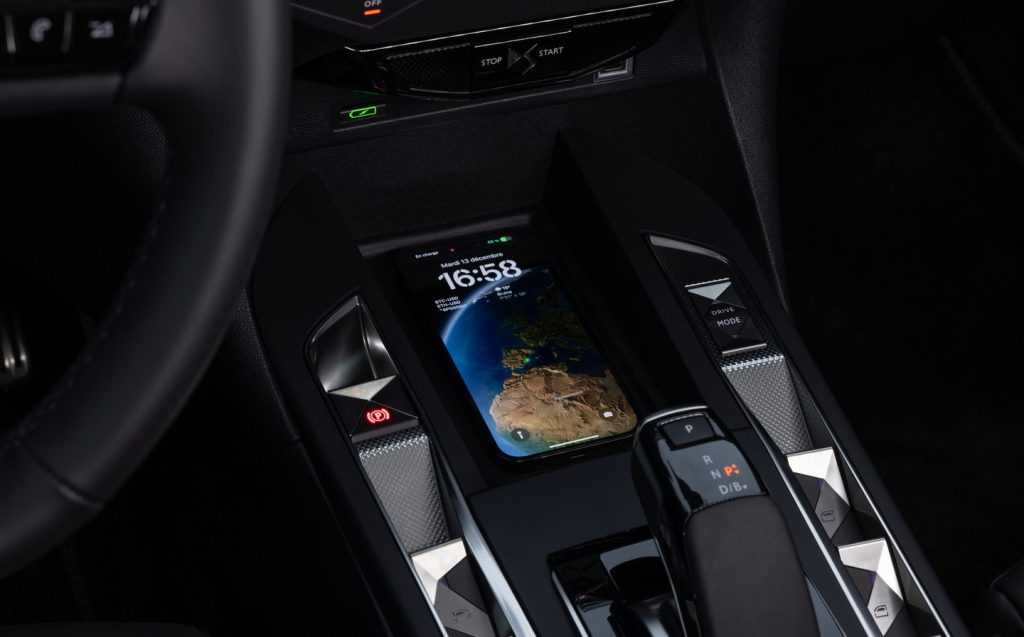
More impressive, however, is the reversing camera, which provides a pin-sharp view of the area directly behind the car, as long as the lens is clean and dry. Admittedly, the 360-degree camera system displayed alongside the rear view is more or less useless, but it doesn’t take up too much of the big new touchscreen.
As you’d expect from a modern car with premium aspirations, the DS 3 comes with plenty of safety tech as standard. Rear parking sensors, autonomous emergency braking and lane departure warning are all included with every model, while cruise control and speed limit recognition are also standard. Front parking sensors, a reversing camera and more advanced safety technology are also standard on range-topping Opera models, while they’re options on the less luxurious versions.
DS 3 Crossback verdict: 3 stars

The DS 3 Crossback won’t be joining its 1955 forefather in the hall of four-wheeled fame, but it’s a genuinely different offering in a crowded class.
Crossovers sell on style as much as any perceived benefits in practicality or ability, and the DS delivers this in abundance. Pick one of the brighter colours, such as Millennium Blue or Imperial Gold (both pictured) and it will turn heads. The interior is a real talking point, too.
Prices are worryingly close to the Audi Q2, and we have some reservations about the ride. However, if the DS 3 Crossback’s outré panache appeals, you should certainly add it to your shortlist.
Pricing and on-sale date
The DS 3 is available to order now with prices from £25,900, which makes it more than £1,000 more expensive than the cheapest Audi Q2 — a car that’s noticeably larger.
The electric DS 3 E-Tense starts at £37,200, which means it costs roughly the same amount as the Volkswagen ID.3, another slightly larger car from a brand that sits on the edge of the premium market.
Those prices only apply to the basic Performance Line model — retail costs rise to almost £43,000 if you want the range-topping Opera trim with the E-Tense powertrain.

All that said, the Performance Line models aren’t badly equipped. You get Alcantara upholstery, ‘keyless’ push-button start and 17in alloy wheels, as well as black exterior trim, bespoke badging and a new touchscreen.
Upgrading to the Performance Line+ adds larger wheels and keyless entry, while the mid-range Rivoli gets leather upholstery and chrome exterior trim.
Then there’s the top-end Opera with more upmarket leather, electrically adjustable seats and a standard reversing camera, plus the head-up display and wireless phone charging.
Home and Destination Charging (0 -> 100%)
Charging is possible by using a regular wall plug or a charging station. Public charging is always done through a charging station. How fast the EV can charge depends on the charging station (EVSE) used and the maximum charging capacity of the EV. The table below shows all possible options for charging the DS 3 Crossback E-Tense. Each option shows how fast the battery can be charged from empty to full.
Europe
Charging an EV in Europe differs by country. Some European countries primarily use 1-phase connections to the grid, while other countries are almost exclusively using a 3-phase connection. The table below shows all possible ways the DS 3 Crossback E-Tense can be charged, but some modes of charging might not be widely available in certain countries.
| Type 2 (Mennekes — IEC 62196) |
|---|
| Charging Point | Max. Power | Power | Time | Rate |
|---|---|---|---|---|
| Standard 7.4 kW On-Board Charger | ||||
| Wall Plug (2.3 kW) | 230V / 1x10A | 2.3 kW | 23h45m | 11 km/h |
| 1-phase 16A (3.7 kW) | 230V / 1x16A | 3.7 kW | 14h45m | 18 km/h |
| 1-phase 32A (7.4 kW) | 230V / 1x32A | 7.4 kW | 7h30m | 35 km/h |
| 3-phase 16A (11 kW) | 230V / 1x16A | 3.7 kW † | 14h45m | 18 km/h |
| 3-phase 32A (22 kW) | 230V / 1x32A | 7.4 kW † | 7h30m | 35 km/h |
| Optional 11.0kW On-Board Charger * | ||||
| Wall Plug (2.3 kW) | 230V / 1x10A | 2.3 kW | 23h45m | 11 km/h |
| 1-phase 16A (3.7 kW) | 230V / 1x16A | 3.7 kW | 14h45m | 18 km/h |
| 1-phase 32A (7.4 kW) | 230V / 1x32A | 7.4 kW | 7h30m | 35 km/h |
| 3-phase 16A (11 kW) | 400V / 3x16A | 11 kW | 5 hours | 53 km/h |
| 3-phase 32A (22 kW) | 400V / 3x16A | 11 kW † | 5 hours | 53 km/h |
† = Limited by on-board charger, vehicle cannot charge faster.
* = Optional in some countries, standard in others. Check local specifications for details.
Exterior design and rivals
Externally, the DS 3 hasn’t changed all that much. The basic shape is still very much the same, from the bubbly headlights to the ‘shark fins’ on the rear doors that nod to the original DS 3 supermini. But look closely and you will spot some changes, such as a tweaked front end with a new grille, less chrome and increased use of LEDs, including new daytime running lights. The brand is particularly proud of the little aerofoils at the bottom of the bumper, which it claims have helped with increasing the electric model’s range between charges.
DS is also pleased with its new tailgate decoration, which sees the DS Automobiles name spelled out in stainless steel on the dark panel that stretches between the taillights.
Otherwise, the changes largely depend on which trim level you choose, with basic Performance Line models getting black wheels and matching trim around the grille and door handles, as well as black DS lettering on the nose and tailgate. More upmarket Opera and Rivoli cars, meanwhile, get more chrome garnishes.

Despite the small changes to the exterior, though, it’s still recognisably the same car. That’s no bad thing — it’s hardly ugly, while the chrome trim ensures it looks stylish and smart enough to be considered alongside established premium brands. Calling it truly beautiful would be a stretch, though. And although the headlights now use LED technology as standard, they are beginning to look a little bit dated.
Verdict: DS 3 review
Strangely enough for a supposedly premium car, the DS 3 is at its best in less luxurious guises, where the price point is more representative of the product. Look past the quality and size issues, and it isn’t a bad compact SUV — particularly in E-Tense electric form — but with alternatives offering more space, better material quality and, in the case of the E-Tense, a longer range, the DS 3 struggles to justify its lofty price tag.
- After reading our review of the updated DS 3, you might also be interested to read the best city cars to buy
- Here are some of the best compact SUVs and crossovers to buy
- Car makers’ electric vehicle plans for 2023 and beyond
ШИРОКИЕ ВОЗМОЖНОСТИ ПЕРСОНАЛИЗАЦИИ
DS 3 CROSSBACK обладает широкими возможностями персонализации благодаря 10 вариантам колесных дисков, 10 цветовым вариантам окраски кузова (включая великолепный Millennium Blue, представленный на концепте DS X E-TENSE Dream-Car) и трём вариантам окраски крыши.
Индивидуальный образ автомобиля подчеркивается пятью вариантами отделки DS Inspirations:DS MONTMARTRE, DS BASTILLE, DS PERFORMANCE Line, DS RIVOLI, DS OPERA и эксклюзивной La Première в ограниченной серии. В этих вариантах отделки цвета и материалы салона, а также элементов отделки кузова комбинируются и сочетаются таким образом, чтобы удовлетворить индивидуальные вкусы и требования самых взыскательных покупателей.
Чувственный комфорт
В DS 3 CROSSBACK все пассажиры наслаждаются максимальным уровнем комфорта. Это одно из главных преимуществ автомобиля. Комфорт — не только одна из отличительных черт марки DS, но также ключевое требование клиентов в сегменте премиум.
Комфорт начинается с сидений. «Обволакивающие» сиденья водителя и пассажира исполнены с применением специального вспененного материала, а также оснащены электрическими функциями управления и подогрева.
Особое внимание уделяется акустике. Звукоизоляция автомобиля была усовершенствована благодаря применению более массивных дверных панелей, тщательно просчитанной аэродинамике и акустическому лобовому стеклу
Обеспечив высокий уровень шумоизоляции и достигнув эффекта DS LOUNGE, воплощенного в кроссовере DS 7 CROSSBACK, инженеры DS объединили усилия с французской компанией FOCAL для разработки идеальной аудиосистемы. Давний партнер марки (c DS E-TENSE, DS 7 CROSSBACK, DS X E- TENSE) с эксклюзивной системой ELECTRA, FOCAL совместно с инженерами и техническими специалистами DS разработали аудиосистему с 12 динамиками, расположенными по всему салону общей мощностью 515 ватт. Звук хорошо сбалансирован, акустика отличается чётким реалистичным звучанием и воссоздаёт стереофонический эффект.
Familiar – and excellent – engines
The DS 3 Crossback comes with a range of petrol and diesel engines and either manual or automatic gearboxes. They’re all used elsewhere in the Peugeot, Citroen and DS ranges, which is no bad thing as without exception they’re punchy, refined and efficient.
They’re all based around the same 1.2-litre, three-cylinder, turbocharged petrol engine, which PSA names ‘PureTech’. It’s available in a basic 100hp form and more potent 130hp and 155hp variants – we think the latter two are the best bets. Even better news is the addition of the group’s excellent eight-speed automatic gearbox on some models, meaning this car should definitely be on your shortlist if you need a small, automatic SUV.
There’s even a hyper-efficient diesel model, an increasing rarity in cars of this size.
51
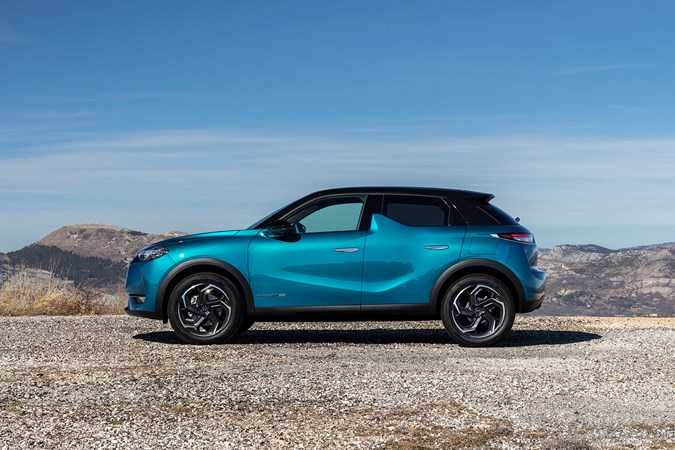 2020 DS 3 Crossback side profile
2020 DS 3 Crossback side profile
However, another way of looking at this is that the latest Peugeot 2008 is available with an identical engine range and at a cheaper price point. Equally, there’s no hybrid models to rival the likes of the Lexus UX – if you want an alternatively-fuelled DS 3 Crossback, you’ll have to opt for the fully electric DS 3 Crossback E-Tense.
Exterior design and rivals
Externally, the DS 3 hasn’t changed all that much. The basic shape is still very much the same, from the bubbly headlights to the ‘shark fins’ on the rear doors that nod to the original DS 3 supermini. But look closely and you will spot some changes, such as a tweaked front end with a new grille, less chrome and increased use of LEDs, including new daytime running lights. The brand is particularly proud of the little aerofoils at the bottom of the bumper, which it claims have helped with increasing the electric model’s range between charges.
DS is also pleased with its new tailgate decoration, which sees the DS Automobiles name spelled out in stainless steel on the dark panel that stretches between the taillights.
Otherwise, the changes largely depend on which trim level you choose, with basic Performance Line models getting black wheels and matching trim around the grille and door handles, as well as black DS lettering on the nose and tailgate. More upmarket Opera and Rivoli cars, meanwhile, get more chrome garnishes.

Despite the small changes to the exterior, though, it’s still recognisably the same car. That’s no bad thing — it’s hardly ugly, while the chrome trim ensures it looks stylish and smart enough to be considered alongside established premium brands. Calling it truly beautiful would be a stretch, though. And although the headlights now use LED technology as standard, they are beginning to look a little bit dated.
The 2022 DS 3 Crossback E-Tense: 100% Electric Powertrain
Via: DS Automobiles
The DS 3 Crossback E-Tense features a fully electric powertrain to ensure a smooth, dynamic and quiet driving experience. The car is powered by a 50 kWh battery, which powers a 134 horsepower e-motor. This can offer a 0 to 62 MPH time of just under nine seconds and a top speed of 93 MPH.
The powertrain is capable of three driving modes, which work to draw different levels of energy from the battery. The first is an Eco-mode, which lets the driver conserve electricity. In Eco mode, some functions, such as internal temperature and recirculating air, are slightly altered to reduce energy use. Next is a Sport mode, which aims to boost driver enjoyment, as it delivers maximum power. Then, Normal mode controls the car’s various settings to ensure maximum comfort.
For even more convenience while driving, the E-Tense features regenerative braking that works for the car itself while in motion. This means that very little charging will be required to gain more energy.
Another added bonus is remote pre-warming, which helps the car be at the perfect temperature with a pre-warmed battery that can operate at its most efficiently.
DS 3 Crossback: first impressions

The 2009 Citroen DS3 – the first modern DS – looked suspiciously similar to the BMW Mini, but nobody could accuse the French of plagiarism this time. The 3 Crossback is a riot of design ideas, some more successful than others.
Established DS themes include the LED fangs in the front bumper, shark fin between the side windows and (optional) contrast roof. There are other influences at play here, though: spot the Lexus-look front grille and Range Rover Evoque-style tail lights.
Neat details include flush door handles, which pop out when you unlock the car, plus a hidden boot release in the number plate recess. We’re less convinced by the startled-looking headlights and horrible fake vents in the rear bumper, though.




























